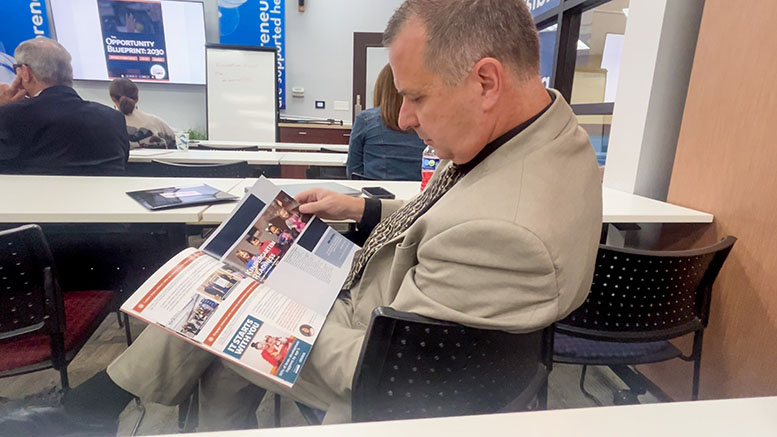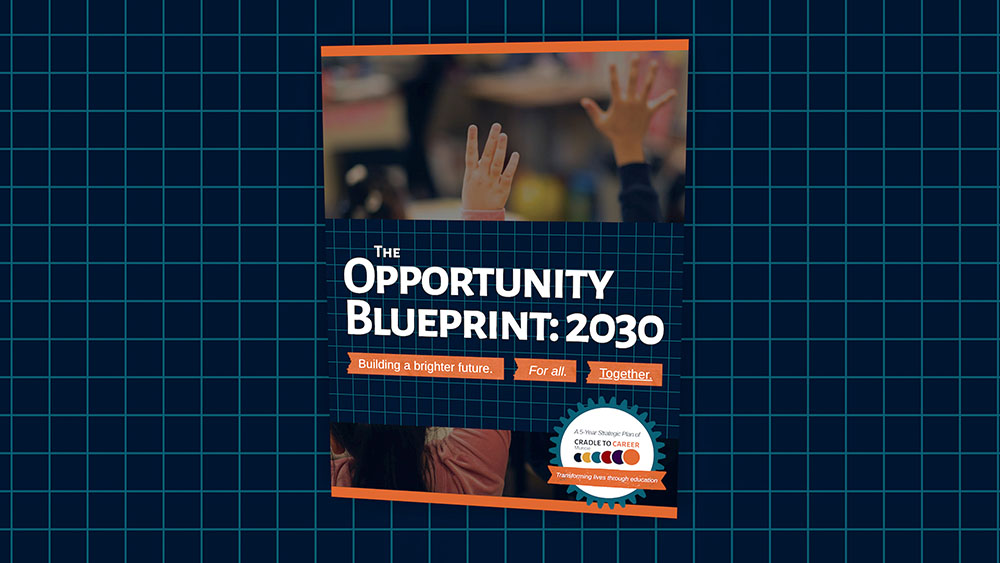By Juli Metzger—
MUNCIE, IN—With community collaboration now in place – across schools, nonprofits, businesses, and higher education – the George and Frances Ball Foundation – is sharing a long-term strategy that transforms a model into a movement.
The Opportunity Blueprint: 2030 is a comprehensive, five-year strategic plan shaped by more than 150 community stakeholders representing a cross-section of interests. It lays out a focused path toward stronger educational outcomes and better long-term employment opportunities for all.
“Our objective is that everyone in our community has a livable wage,” said George and Frances Ball Foundation President and CEO Thomas Kinghorn.
The Opportunity Blueprint: 2030 provides clear direction for a broad coalition of business and community leaders to move in alignment with a shared vision.
Early Care and Education Innovation. K-12 System Transformation. Neighborhood Hub Mobilization. Work-Based Learning. The Economy of the Future.
The plan outlines how these interconnected strategies – moving in tandem – can elevate the Muncie community over the long run and into the future.
Over the next five years, this plan will guide collective action through shared goals, data-driven decision-making, peer learning, and continuous improvement. The Opportunity Blueprint: 2030 charts a course toward a more equitable future – where every child succeeds, regardless of background or zip code.
This marks the next chapter of Cradle to Career Muncie, the transformative work that began in 2018.
In just five years, Cradle to Career Muncie has witnessed a number of wins:
- Stabilized student enrollment at Muncie Community Schools
- Secured more than $15 million in funding from local philanthropies and national funders
- Completed family engagement assessments across all district schools
- Muncie Community School’s Board of Directors increased teachers’ pay at Muncie Community Schools by 40 percent
- Improved teacher retention by 10 percent
Yet, there is still work to be done:
- In Muncie, life expectancy varies by as much as 13 years, depending on zip code.
- The city’s median household income is $15,000 below the state average.
- In some neighborhoods, up to 80 percent of children live in poverty.
Research shows that of a child’s 6,000 waking hours each year, only 1,000 are spent in school—and that is when students have perfect attendance.
That’s why The Opportunity Blueprint: 2030 was designed to complement the school district’s efforts, providing a roadmap for support and transformation both inside and outside the classroom.
Strategic efforts to improve quality of place are deeply connected to Cradle to Career Muncie’s mission of advancing educational attainment and economic mobility.
With a focus on meaningful credentials and real-world readiness, we’re building something powerful: a generation that not only graduates – but flourishes, said Kinghorn.
“Research tells us that a post-high school credential makes a meaningful difference in earning potential,” said Kinghorn. “Whether it’s college, skilled trades, tech careers, or the military, these are paths students should explore sooner rather than later.” Students can’t be what they can’t see, so it is important that the community is helping to provide opportunities for all students to see a future that they desire.
Much of Muncie’s data predict population decline, loss of high-wage high-demand jobs, and show other signs of community decline in the city over the next decade. However, predictions are based on “business as usual” assumptions and are far from fate.
So, what happens when a groundswell of community leaders decides to chart a different destiny?
The Opportunity Blueprint: 2030 challenges the status quo. It imagines a different, brighter future. It pairs that imagination with a blueprint for strategic action to make these big ideas reality.




